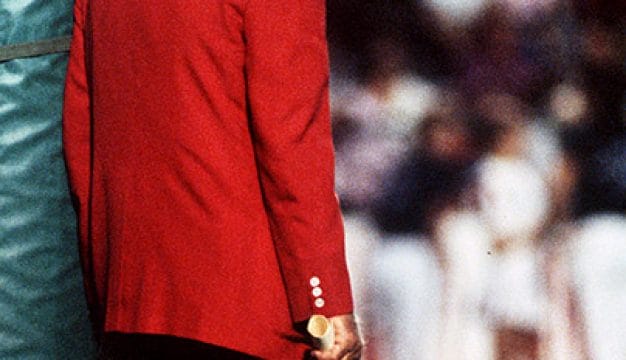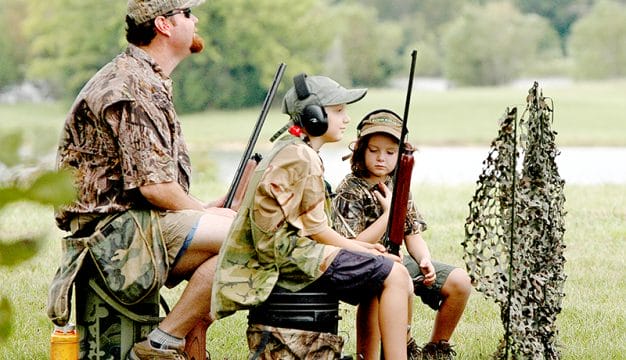Monday Morning Quarterback Club
Birmingham‘s Monday Morning Quarterback Club (MMQBC) was formed in 1939 as forum for men to discuss football games and also serve as a charitable organization. Together with the Crippled Children’s Clinic, it became a leader in the effort to raise money for polio treatment and prevention in Jefferson County and later throughout the state. After polio cases declined, the club and the clinic, later a foundation, broadened their focus to assist a variety of charities in the area.
The organization was founded by Birmingham News sports editor Henry “Zipp” Newman. Members met seasonally on Mondays to discuss football games from the prior weekend, usually with a sports figure as the speaker. Membership was comprised primarily of local businessmen who paid a club fee, had an upstanding reputation in the community, and agreed to support the community. From its inception, Newman insisted the club provide a charitable service. Members quickly decided upon the growing polio epidemic (poliomyelitis) as their cause, and fundraising efforts began in earnest with a focus on aiding area children stricken with the disease.
The MMQBC worked with community agencies to target financial assistance where it was most needed, including existing clinics. A decade earlier, the Birmingham Zamora Temple of the fraternal Shriners organization had acquired a clinic building in which to treat young polio patients, and opened the area’s first Crippled Children’s Clinic. But the growing number of applications across Alabama and the financial woes caused by the Great Depression required the club to seek additional funding. Civic clubs aided in both awareness and fundraising. One such group contributed a penny a day to the cause, calling themselves the 365 Club. The newly formed Monday Morning Quarterback Club became a major fundraising arm and would later be the largest and most enduring supporter of the Crippled Children’s Clinic.
The MMQBC partnered with the Birmingham News to sponsor the Crippled Children’s Clinic Game, a series of football games featuring high school all-stars. The games were wildly popular, and the proceeds benefitted the clinic. By 1942, the clinic game moved to Thanksgiving Day with a new format featuring a championship game between the top high schools in Birmingham. By 1974, the Crippled Children’s Clinic Game became the championship game for the state’s 4A high school teams. Two decades later, the MMQBC partnered with the Alabama High School Athletic Association (AHSAA) in the first “Super 6” high school football championship games, held at Birmingham’s Legion Field. Currently these games are known as the AHSAA “Super 7” games and continue to draw large audiences, supporting both football and children’s aid.
These financial accomplishments enabled the clinic to continue and improve its staff and facilities. Prior to 1950, the number of patients and their needs continued to increase, particularly those suffering from paralytic poliomyelitis. Through public and private appeals, a dedicated hospital was erected at 620 South 19th Street in 1951. Officially named the Crippled Children’s Clinic and Hospital, it was often referred to as “the hospital football built.” The $3 million facility consisted of six floors and housed 100 in-patient beds. Its unusual T-shape allowed the placement of large balconies where patients could enjoy the outdoor playground or sunbathing. Inside features included a library, brace shop, and chapel, as well as state-of-the-art medical facilities.
Through multiple publicity campaigns, the hospital gained recognition and trust in the community. Both the hospital and the MMQBC worked to educate the population about polio, as there were many misconceptions surrounding the disease. The hospital garnered additional attention as numerous celebrities, including noted actor and comedian Bob Hope, visited with hospitalized children. Clayton Moore, star of The Lone Ranger television program, received his polio vaccine during his visit to the hospital.
Although the Crippled Children’s Clinic and Hospital provided much-needed care, federal approval of medical researcher and physician Jonas Salk’s polio vaccine in 1955 would drastically reduce the number of polio victims nationwide and in Alabama. As a result, the clinic received fewer patients, ultimately resulting in the sale of the building in 1970 to the University of Alabama at Birmingham (UAB). Trustees of the Crippled Children’s Clinic and Hospital agreed to place proceeds of the sale in a fund to help Alabama children with medical expenses, thereby creating the Crippled Children’s Foundation (CCF).
The hospital building was demolished in 1975 for the construction of the UAB University Hospital Spain-Wallace tower addition. Both UAB and Children’s Hospital named building additions the “Quarterback Club Tower” to honor the group that provided much-needed assistance to the community. Through their efforts, Alabama children with polio learned to walk and run again.
The Monday Morning Quarterback Club is located in downtown Birmingham in the Harbert Center and features a guest speaker at each meeting, usually a college football coach. Through the years, football “greats,” such as Ralph “Shug” Jordan, Paul “Bear” Bryant, Gene Stallings, Pat Dye, Nick Saban, Ozzie Newsome, and former Navy and Dallas Cowboys star quarterback Roger Staubach have been among the meeting speakers. It is not uncommon for speakers to donate their event fees back to the Club, citing the continuing medical demands of Alabama’s children.
As the MMQBC receives new members each year, they are considered “Freshmen” and tour Children’s Hospital of Alabama to better understand the need behind their fundraising efforts. Together, the Monday Morning Quarterback Club and the Crippled Children’s Foundation have raised almost $29 million for more than 40 charitable organizations.



